Healthy at 100: Blue Zone’s 9 Keys to Longevity
Want to live to be 100? While the average age in the US is still only 78, there are over 70,000 Americans living vibrantly over the age of 100 in the United States alone. So, how do they do it? It’s tempting to think that with enough omega-3s, kale and blueberries, you could eat your way there.
While the Mediterranean, Scandinavian, Plant-Based, Japanese, and Longevity diets all have similar routes to long-life and centennial success… diet alone is only one part of the picture.
Here are all nine of the Blue Zone’s most essential discoveries on long life success.
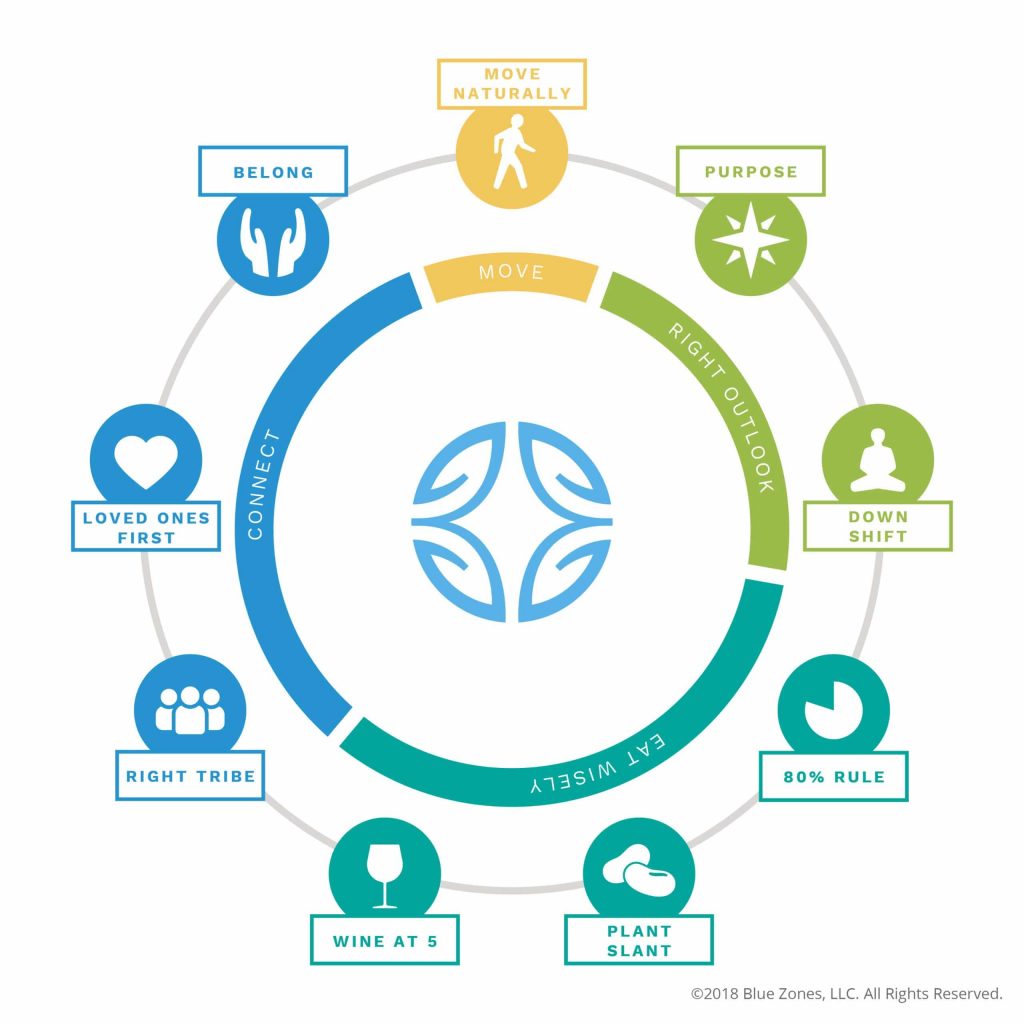
1. Move Naturally
While pumping iron and extreme sports are awesome, and super jacked bodies are impressive… longevity fitness is a very different idea. The world’s longest-living people don’t hit the gym for a few high-stress high-intensity hours each week, but instead live a life of constant low-impact movement and muscle use.
“The world’s longest-lived people don’t pump iron, run marathons or join gyms. Instead, they live in environments that constantly nudge them into moving without thinking about it. They grow gardens and don’t have mechanical conveniences for house and yard.”
Surrounding your lifestyle with active habits that require constant walking, bending, lifting, and moving keeps your body fit and healthy for the long-run, building in habits you maintain all your life and avoid the risk of injury, burnout, or fatigue in later years where you stop moving all together.
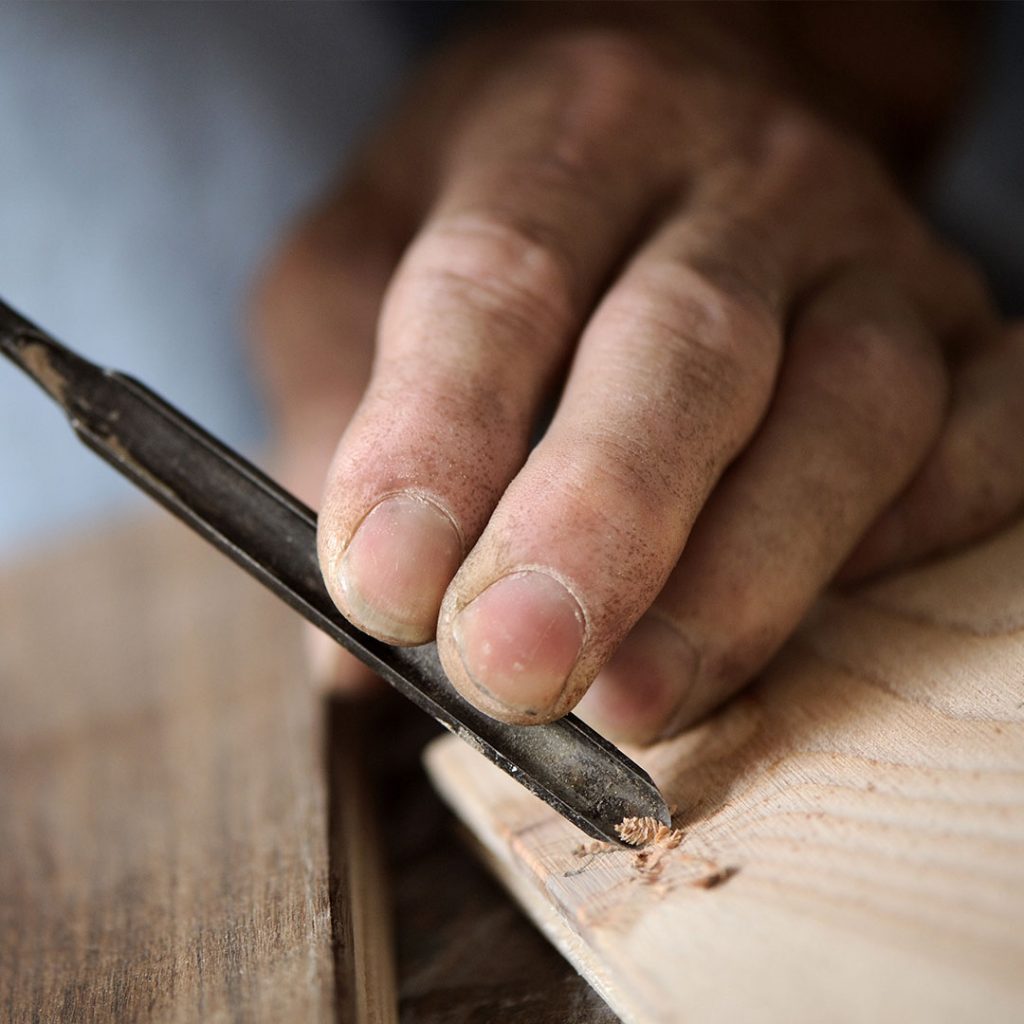
2. Purpose
This one is really simple, and yet is the hardest to master. Having a satisfying and meaningful life’s purpose isn’t as easy as it seems in our modern world. But the centenarians will tell you it’s one of the most important parts of a healthy long life, and scientists have found it adds at least 7 years to life-expectancy.
The Okinawans call it “Ikigai” and the Nicoyans call it “plan de vida;” for both it translates to “why I wake up in the morning.”
Scientists believe the reason is all down to stress and mindset. Having an understanding of your overall purpose grounds you in your own life. It means you’re more able to weather the storms of life, and don’t often sweat the small stuff. In a very real way, that lower’s your body’s cortisol level and cortisol is the chemical most often linked to addictive and self-destructive behaviors like over-drinking, over-eating, drug-use, and over-consumption of media or sedentary lifestyles.
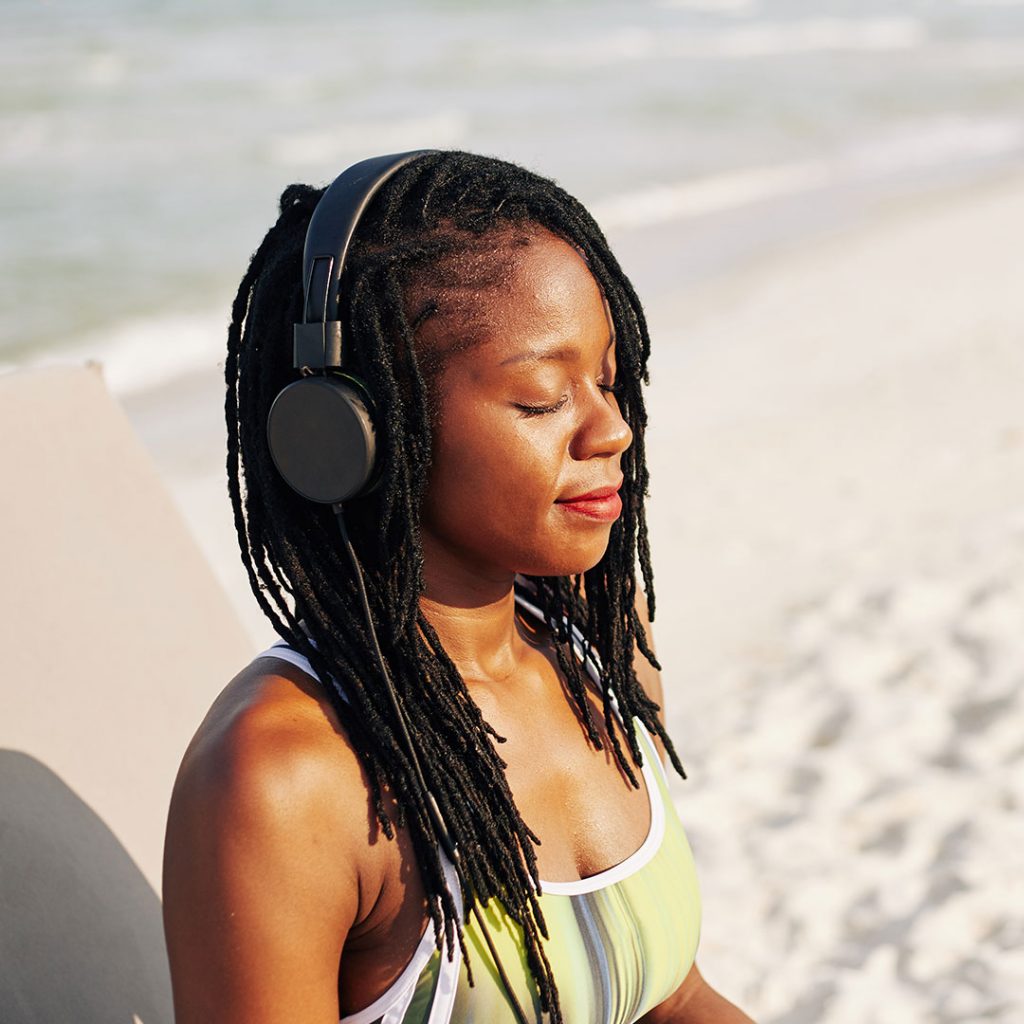
3. Down shift
Speaking of stress! Stress is really one of the biggest killers in our society today. Think of your body as your iPhone. Sure, you can put it in the sun. No problem. But if it sits directly in the sun for a long time on a hot day, what happens? It overheats and shuts down whether you like it or not.
The same happens in our bodies. Stress is a part of life and it’s not going away. We all have stress and get stressed and we can still function and move along. However, when those cortisol levels build and build and build and you don’t down shift or give yourself a break… just like that phone in the hot sun… your body is going to shut down and force you into a numbed-out state because it’s sensing it’s in a state of emergency.
Okinawans take a few moments each day to remember their ancestors, Adventists pray, Ikarians take a nap and Sardinians do happy hour.
Our longevity heroes give themselves daily downshift time every day. They don’t wait until the stress builds up to take a load off, and this way they don’t struggle with the extreme highs and lows that cause unhealthy behaviors in our every day lives.
4. The 80% Rule
This is the other 80% rule. You know we at MacroPlate always encourage the 80%/20% approach to dieting and lifestyle, which means focus on being strict 80% of the time and always allow for the glorious and delicious moments of life that other 20%.
But this Blue Zones rule is more about how much you eat. They recommend eating until your 80% full and never beyond it.
“Hara hachi bu” – the Okinawan, 2500-year old Confucian mantra said before meals reminds them to stop eating when their stomachs are 80 percent full. The 20% gap between not being hungry and feeling full could be the difference between losing weight or gaining it. People in the blue zones eat their smallest meal in the late afternoon or early evening and then they don’t eat any more the rest of the day.
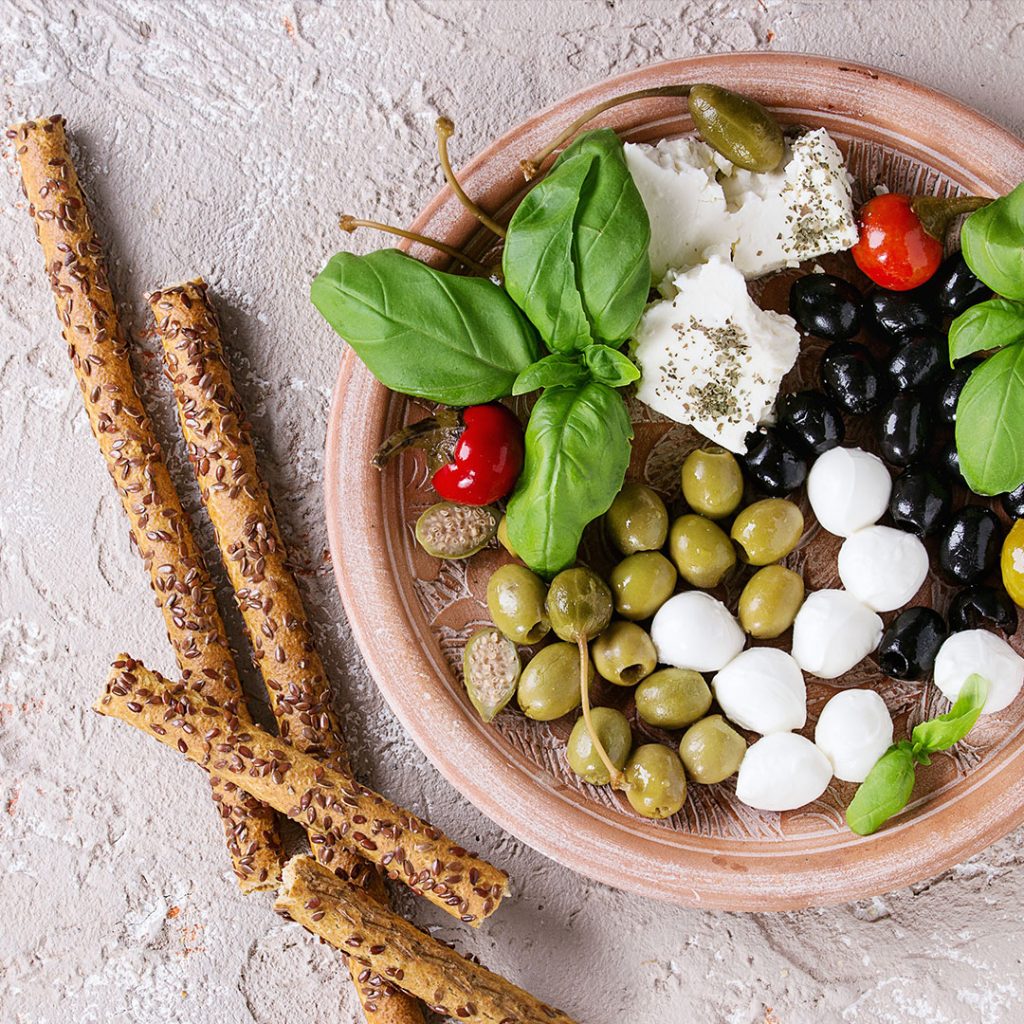
5. Plant Slant
More and more evidence is coming out in the scientific community that Mother Earth has all the vitamins, minerals, and nutrients for stellar health and longevity in all her plants. The plant slant means that the majority of your calories come from the plant world. All the healthiest, longest living communities on earth eat a majority of grains, legumes, beans, fruits, and vegetables, with meat, seafood, and dairy very lightly.
Beans, including fava, black, soy and lentils, are the cornerstone of most centenarian diets. Meat and seafood is eaten on average only five times per month. Serving sizes are 3-4 oz., about the size of a deck of cards.

6. Wine @ 5
This is probably the one you’re most likely to start implementing right away… right? Yes, wine drinking every day is recommended.
People in all blue zones (except Adventists) drink alcohol moderately and regularly. Moderate drinkers outlive non-drinkers. The trick is to drink 1-2 glasses per day (preferably Sardinian Cannonau wine), with friends, family, and/or with food.
And no, you can’t save up all week and have 14 drinks on Saturday.
7. Belong
Whether it’s a church group, a meditation group, community center, or just a lovely little neighborhood, healthy people have long, deep, and daily friendships with others. The Blue Zone research showed being part of a religious community was helpful, but it seems denomination is irrelevant. The point is to joined in community with others an form lasting bonds where you can rely on others to support you, while you in turn get out of your own life to support others.
All but five of the 263 centenarians we interviewed belonged to some faith-based community. Denomination doesn’t seem to matter. Research shows that attending faith-based services four times per month will add 4-14 years of life expectancy.
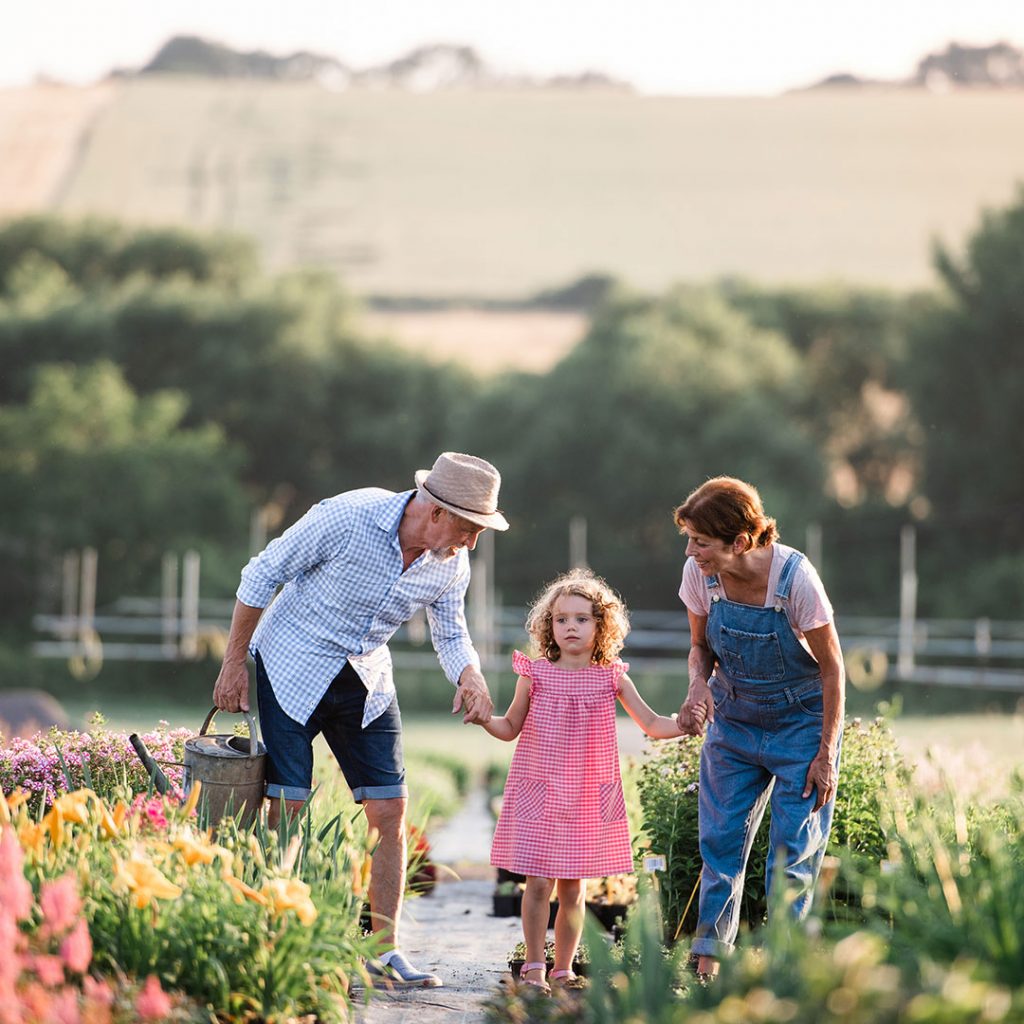
8. Family First
One aspect many groups had in common was that multiple generations either lived together or close by and were actively involved in each other’s lives. This daily or consistent interaction between generations doesn’t help only the young, but really benefits the old. Having vibrant and dynamic energy and new ideas helps keep their minds active and engaged.
Successful centenarians in the blue zones put their families first. This means keeping aging parents and grandparents nearby or in the home (It lowers disease and mortality rates of children in the home too.). They commit to a life partner (which can add up to 3 years of life expectancy) and invest in their children with time and love.
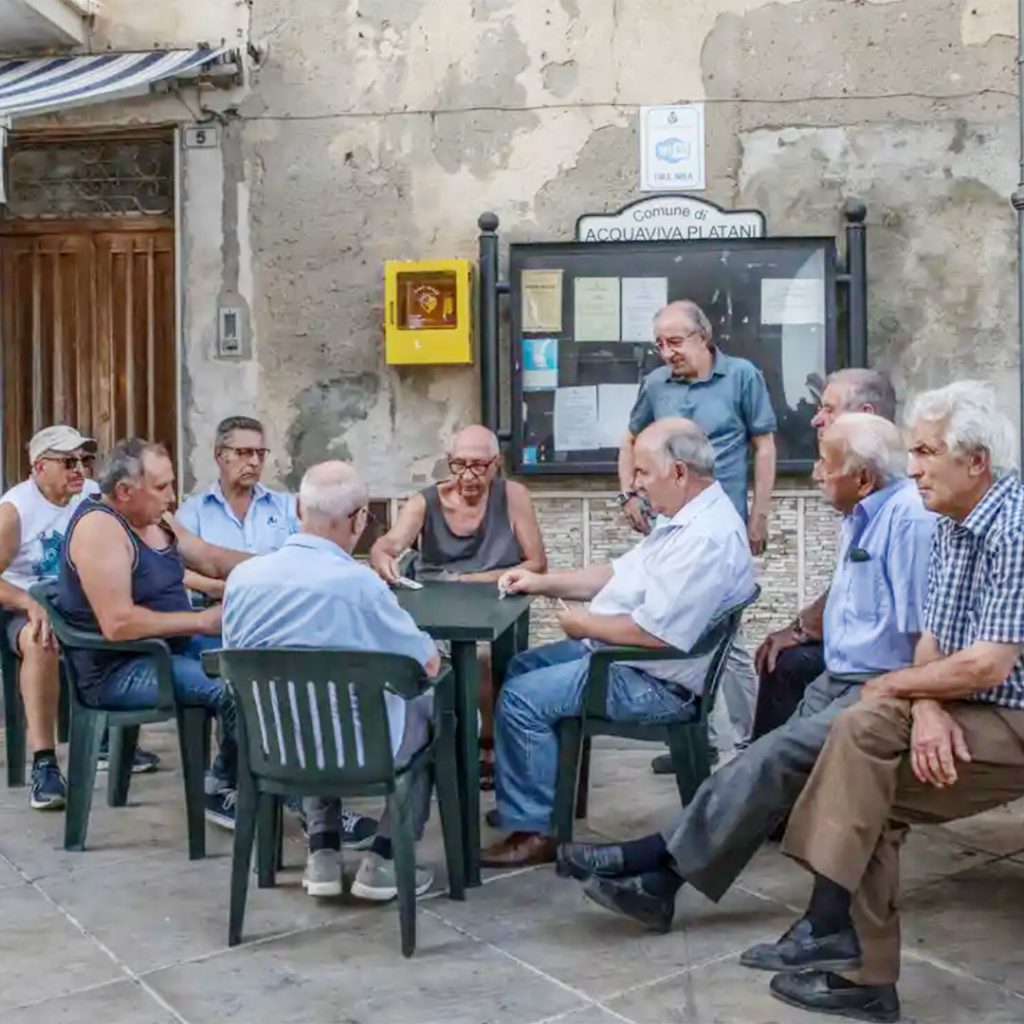
9. The Right Tribe
If you ever go to Italy, you’ll see something like the picture above everywhere you go. Old age is not a lonely time for these Nonni, in fact you’re more likely to see grandpa gangs than you are younger crews. As many of the older generation never moved away and still live in their family homes, they still live on the same block with all their other friends from childhood. The neighborhood bar is much more of the active cultural center. It’s common for the whole neighborhood of elderly people to maintain life-long friendships over daily morning coffee, and evening cards, is a natural part of life.
The world’s longest lived people chose–or were born into–social circles that supported healthy behaviors, Okinawans created ”moais”–groups of five friends that committed to each other for life. Research from the Framingham Studies shows that smoking, obesity, happiness, and even loneliness are contagious. So the social networks of long-lived people have favorably shaped their health behaviors.
So what can you do if you don’t live in a tight-knit Italian neighborhood or an Okinawan friend circle? Work hard to maintain the friends you do have. Start a group chat and make it active. Suggest weekly or monthly hangouts. Build traditions. If you don’t have local friends go on meetup and join some groups! Talk to people at your local farmers market or local restaurants and make plans.



